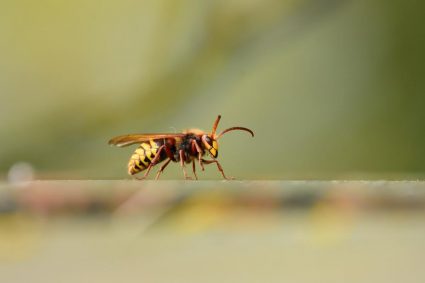
Raccoons can be quite the nuisance, especially when they decide to take up residence in your attic. Not only are they noisy, but they can cause significant damage to your property and potentially pose health risks to you and your family. This comprehensive guide will provide you with everything you need to know about how to remove raccoons from your attic safely and effectively.
To remove raccoons from your attic, first identify if you have a raccoon infestation by looking for signs like urine and feces stains, noises, and damage to your property. Then, use methods like locating and removing baby raccoons, using eviction fluid, creating an unwelcoming environment, installing one-way doors, or hiring a professional. After removal, seal all entry points, clean and decontaminate the attic, and take preventative measures to avoid future infestations.
Identifying a Raccoon Infestation
Before you can tackle the problem, you need to be sure that raccoons are indeed the culprits. Some common signs of a raccoon infestation include:
- Urine and feces stains in the attic or on the roof
- Noises in the attic, such as footsteps, snarls, chewing, and scratching
- Damaged soffit panels, fascia, or roof holes
- Pawprints and scratch marks on your home’s woodwork
- Regular sightings of raccoons on your roof or in your yard
- Dust footprints in the attic
- Holes in foundation vents
- Random smears of dirt on the outside of your home
- Large defined trails through insulation in the attic
- Presence of nesting materials, such as leaves, twigs, and damaged insulation
If you notice any of these signs, it is recommended to contact a professional wildlife removal company to inspect your attic and remove the raccoons as soon as possible.
Health Risks Associated with Raccoons
Raccoons are known to carry several diseases that can be harmful to humans, including Raccoon Roundworm, Giardiasis, Salmonella, Rabies, and Leptospirosis. To mitigate these health risks, it is essential to remove raccoons from your attic promptly and prevent them from returning. After the raccoons have been removed, clean and sanitize the affected area to remove any remaining waste, urine, or fecal matter.
Removing Raccoons from Your Attic
There are several methods you can use to remove raccoons from your attic. Here are the most effective and humane methods:
- Locate and remove baby raccoons: If there is a litter of baby raccoons in the attic, start by removing them. Wear heavy gloves and gently place the pups into a box or pillowcase, ensuring they remain unharmed.
- Use eviction fluid: Raccoon eviction fluid is an effective and humane method for removing raccoons from the attic. It is less of a hassle than setting up traps and relocating or euthanizing the raccoons.
- Create an unwelcoming environment: Use light, noise, and odors to irritate and repel raccoons. For example, you can place a loud, battery-operated radio in the attic or set a bowl of cider vinegar near their nest site.
- Install one-way doors: These doors allow raccoons to exit the attic but prevent them from re-entering.
- Hire a professional: If you are unable to remove raccoons on your own or prefer a safer and quicker solution, consider hiring a wildlife removal specialist. They can locate, remove, and clean up after raccoons, ensuring a humane and effective process.
After removing the raccoons, it is essential to seal any entry points to prevent future infestations. This may involve trimming tree limbs that provide access to your roof, sealing off gaps with heavy gauge wire, or installing wildlife-proof materials. Additionally, clean and decontaminate the attic to remove any waste left behind by the raccoons.
Preventing Future Raccoon Infestations
Prevention is the best way to keep raccoons out of your attic. Here are some steps you can take to deter raccoons from re-entering your attic:
- Seal all entry points
- Trim tree branches close to your home
- Install exclusion devices
- Use deterrents such as motion-activated lights or commercial deterrent sprays
- Regularly inspect and maintain your attic
- Remove food sources around your property
- Clean up debris and secure garbage cans
By following these steps and being vigilant about raccoon activity around your home, you can effectively prevent future raccoon infestations in your attic.
Remember, dealing with raccoons is not a DIY job for everyone. If you’re not comfortable handling these animals or if the infestation is severe, it’s always best to call in the professionals. They have the expertise and equipment to handle the situation safely and effectively.
Frequently Asked Questions
What is Raccoon Eviction Fluid?
Raccoon eviction fluid is a natural repellent made from the urine and gland secretions of male raccoons. It is especially effective in evicting female raccoons with young, as they instinctively want to protect their offspring from male raccoons, who are known to kill babies that are not their own.
What does a raccoon’s paw print look like?
A raccoon’s paw print is distinctive and is often compared to a tiny human hand. It has five long, slender digits on both the front and back paws, with a roundish palm. The length of the print is typically around 3 to 4 inches.
Can raccoons cause structural damage to a property?
Yes, raccoons can cause significant structural damage to a property. They are strong animals with sharp claws, capable of tearing holes in roofs and soffits. Additionally, their urine and feces can stain and damage insulation and other building materials.
How do I clean and sanitize my attic after a raccoon infestation?
To clean and sanitize your attic after a raccoon infestation, start by removing all contaminated insulation. Then, scrub the area with a bleach and water solution to kill harmful bacteria and parasites. Finally, replace the insulation and consider installing an attic fan to help dry out the space and prevent mold growth. It’s often best to hire a professional to handle this process due to the potential health risks involved.
What should I do if I find an injured or sick raccoon in my attic?
If you find an injured or sick raccoon in your attic, do not attempt to handle it yourself. Raccoons can carry diseases that are harmful to humans. Instead, contact a local wildlife rehabilitation center or animal control agency for assistance.










